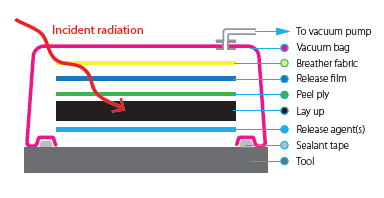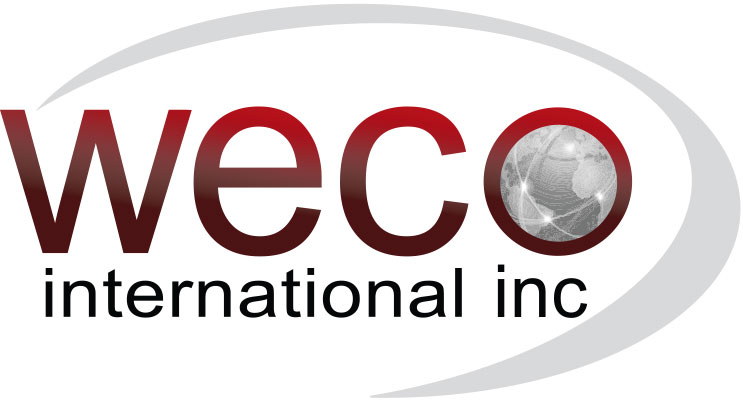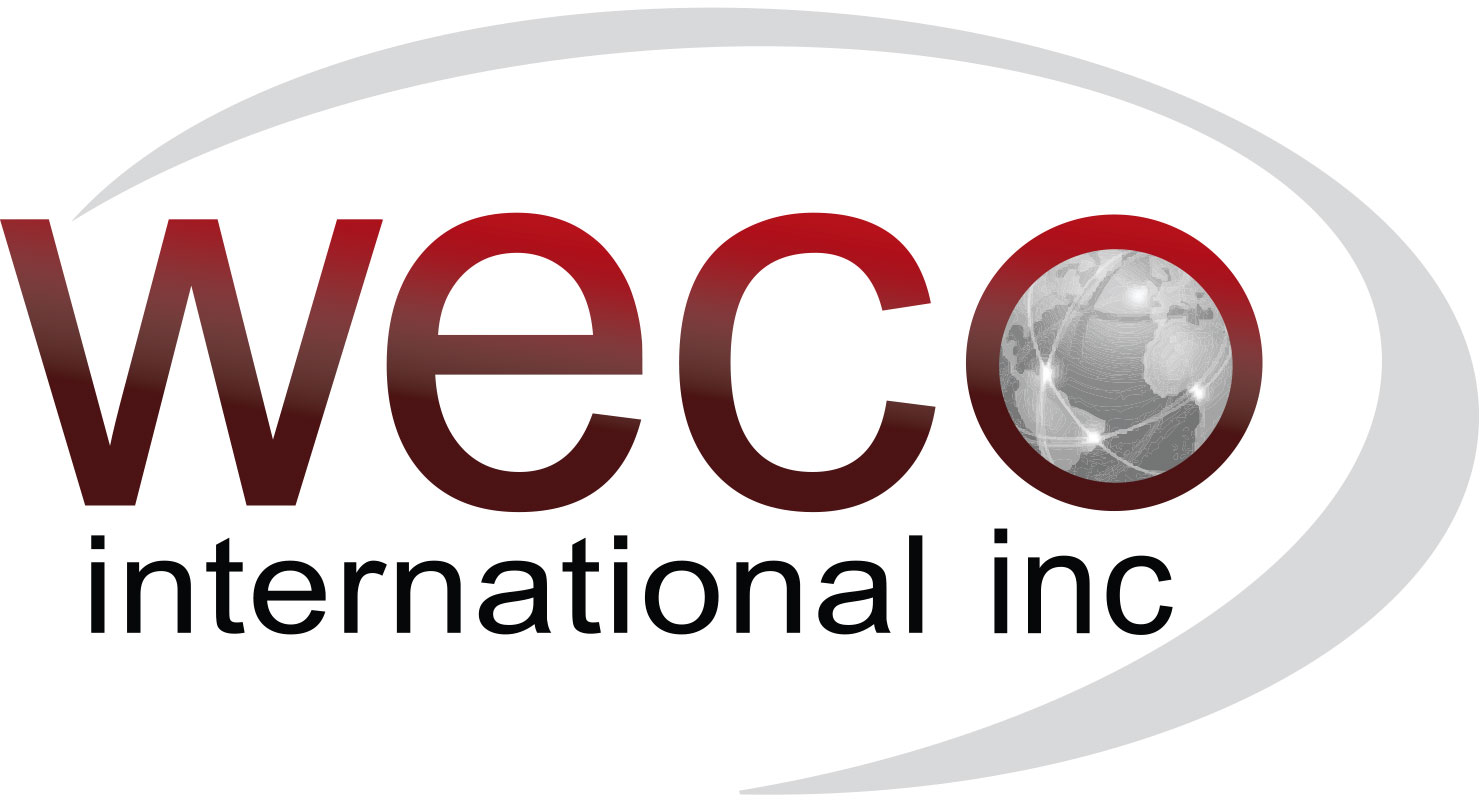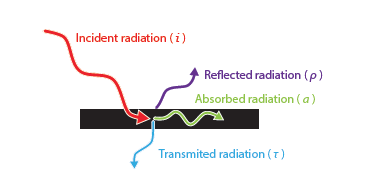
Ceramicx never tires of preaching the fundamentals of Infrared’s Heating characteristics and effects. November, 2017, Dr Peter Marshall of Ceramicx took the opportunity to brief a UK audience of engineers and scientists attending the Advanced Manufacturing Exhibition at the NEC, Birmingham where Ceramicx had a booth. HeatWorks magazine is pleased to produce highlights of the talk here.
My name is Peter Marshall. I’m going to speak about the use of infrared to heat and cure carbon fibre. Before that – some introductions; to myself, Ceramicx and its research arm; C2I2.
I have a background in materials science, nano-science, polymer processing and heat transfer. My Ph.D. focussed on nano-scale thermal transport in fluid media and used this to increase the efficiency of heat transfer processes.
Ceramicx has been a specialist in infrared heating for over 25 years and has always pushed the bounds of processing to drive productivity increases and energy cost reductions. Uniquely, Ceramicx manufactures all three types of IR emitters; enabling the company to offer a solution to most thermal processing challenges. In a nutshell, C2I2 works to establish and improve the efficiency of Ceramicx’s emitters and define the optimal heating technology for a given material.
We’re all aware that out-of-autoclave carbon composites are gaining significant traction in our industry. OEM’s are demanding better quality, faster cycle times and more energy efficient processing methods giving our industry, particularly Ceramicx’s niche enclave of infrared heating, a particularly interesting time and a window of opportunity.
Ceramicx is a supplier of infrared heating elements, components and bespoke turnkey machinery to numerous sectors including the automotive and aerospace. Infrared and radiation heating is a complex phenomenon; it is often misunderstood and poorly applied. To address this, I will speak about three key points:
- How IR works
- How IR can be targeted
- How temperature can be controlled
IR Properties
Infrared lies just beyond the visible spectrum with wavelengths ranging from approximately 0.7μm to 1000μm. Of this band, the useful wavelengths extend from 0.7μm to 10μm. After that, the emitter body temperature is largely too low to provide a heating effect.
IR has many properties of conventional visible light: it has a magnetic field associated, can be reflected or diffracted, its energy is quantized and de Broglie’s wave-particle duality holds true. Infrared is also very safe. Distinct from other forms of radiation such as nuclear, microwaves or UV, the energy of infrared photons is not substantial enough to ionise other particles and be a danger to humans.
Infrared is substantially different to conduction and convection. As we all know, radiation doesn’t need a medium to travel in – it’s how the sun heats the earth; however the key issue that consistently gets ‘lost in translation’ is that IR is a form of energy, not heat. So what happens when this energy is incident on a surface? Similar to visible light, what we see is three processes occurring: reflection, transmission and absorption.
IR Heating
Taking these in order, we want to minimise reflection as it represents wasted energy which is not used in our heating process. Transmission is useful as we can see in the diagram. It allows some radiation through the material gives us a penetrating effect, very distinct from conduction and convection. We’ll come back to this, but in certain circumstances, such as heating carbon fibre layups, this can be hugely advantageous and gives us the capability to minimise thermal gradients across parts during heating.
We said that IR is a form of energy which only gets converted back to heat when it is incident and is absorbed by a surface. The measurable thermal effect of the energy is dependent on many factors such as intensity; however the most influential is the absorptivity of the surface.
This is a material specific property which varies with wavelength and temperature. Unfortunately, traditional IR spectra use much longer wavelengths which are not thermally active (i.e. <10μm) and so we can’t use these to predict thermal IR absorption. The best way to define this is through empirical research via test instruments such as the Herschel, developed and pioneered by Ceramicx and now in daily usage at the company.

Of course, like any energy process, we cannot create or destroy energy, so the sum of the reflected, transmitted and absorbed radiation must be equal to the energy of the incident radiation.
IR Properties
Infrared can be targeted to specific materials. This diagram shows specific targeting of carbon fibre and penetration of the bagging materials using the transmission property we mentioned earlier. The bag’s integrity is vital to the part’s quality; therefore a heater which emits radiation at a wavelength which is transmitted by the film is paramount. This selection and tuning of the wavelength is vital to infrared’s performance. What we see is that by tuning the IR wavelength to the materials, we can not only control the surface temperature more precisely, but we can minimize the thermal gradient across the part.
In this example, we see how changing the IR emitter’s wavelength can influence the resultant temperatures not only of the top surface, but the underlying layers, by virtue of the properties we spoke about earlier. The goal of this experiment was to elucidate which heater had the best heating to penetration ratio. A variety of methods can be used to vary the emission spectrum of the heater, however, once this is optimized, we can look at methods to ensure that processing occurs within the processing windows specified by the material manufacturer.
Targeting & Control
Earlier, we said that IR has the same properties as light and can therefore be reflected; indeed it can be focussed to increase its intensity as well. We can therefore use these properties of Infrared to target specific portions of a part, for example, locations which are reinforced or thicker than others.
Doing this enables users to ensure even heating and optimal cycle time. Material reflectivity, like absorption, varies as a function of temperature and wavelength. To optimise the targeting of certain portions, Ceramicx uses materials specifically optimised for this purpose which can withstand and maintain high temperatures and reflectivity, respectively. Giving radiation this directional quality can dramatically change the realised heating effects by changing the area over which the energy is delivered.
The third vital point to infrared’s use is its control. Material temperature is a direct product of the absorbed energy, therefore switching heaters gives fast response on material temperature. Depending on the heater employed, there can be very little thermal inertia, so we see very fast material heating response times which contrasts with large volumes of air. IR emitters can be controlled to great effect using a variety of methods, be these open-loop, thermocouples or pyrometers in conjunction with a PLC or other suitable process controller.
Open-loop control, for example, is an excellent cost-effective solution for batch systems where little or no change in material occurs. It is also extremely functional in other static systems where dynamic adjustments are not required. Processes requiring dynamic and constant heater adjustment or where materials are frequently changed will likely require closed-loop control in which either material or heater temperature is fed back to the controller which makes power adjustments. In either case, element control can be individual or in zones slaved from a single feedback device setting the percentage output of each channel to realise the desired heating effect.
Naturally there is some air heating in enclosed environments primarily due to back convection from the material to the surrounding air. This can be harnessed to aid the efficiency of the process by removing excess energy from ‘hot spots’ and transferring it to cold spots using classic convection. Therefore we can see the advantage of IR which allows us to harness all three modes of heat transfer rather than limit ourselves to a brace of these.
Ceramicx has built a number of carbon composite heating systems for out-of-autoclave and thermoplastic composites examples of which are shown here. Of specific interest here is the thermoplastic system which allows for carbon fibre heating up to and beyond 450oC.



